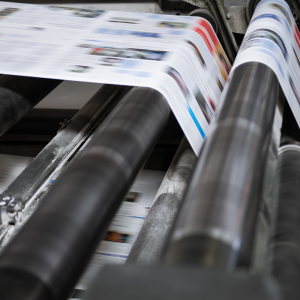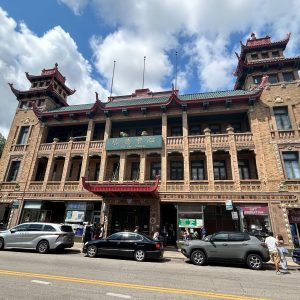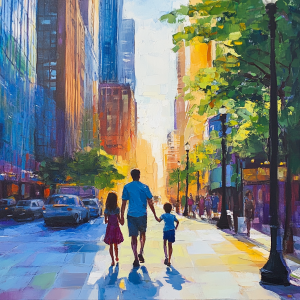
The history of Chicago’s Chinatown
Published on October 3, 2022
Chinatown is one of the richest locations in Chicago. As similar towns in American cities it features oppression and eventually pride in its culture.
Chinese migration to the United States began in 1848, landing in San Francisco at the start of the California Gold Rush. Within a few years, a crop failure in southern China greatly escalated the exodus from their native country, and they took job in the mines and building the railroads.
However, they were soon met with legalized discrimination, with the state taking such anti-Chinese efforts as imposing a tax on foreign-born miners and preventing Chinese from testifying in court. The latter all-but legalized violence against the new arrivals. After the completion of the transcontinental railroad in 1869, many Chinese began to head east in search of hopefully friendlier locales.
It’s believed that the first permanent Chinese settler in Chicago was T.C. Moy, who came to the city in 1870. He wrote to friends and family of a better experience than he had faced in California, and convinced them to join him. But the migration to the Midwest was complicated by a pair of federal laws. First came the Page Act of 1875, which prohibited East Asian women from entering the U.S., partly on the grounds that many were coming here and finding sex work. That was followed seven years later by the Chinese Exclusion Act, which banned migration of laborers from China—exemptions could be granted to diplomats, teachers, merchants, and students—and prevented those who were here from becoming U.S. citizens. The law was repealed in 1943 due to China’s alignment with the Allies in World War II.

At the time of the act’s passage, Chicago’s Chinese population was very small—there were 172 in 1880—and had gathered in the Loop on a two-block stretch of S. Clark St. between Van Buren and Harrison streets. That area had already earned a notorious reputation and was called “Little Cheyenne” because of its lawless, Old West vibe. An article in the Tribune reported that Chicago’s first Chinatown included groceries, pharmacies, barbers, butchers, a cigar factory, and a restaurant.
By 1900, the Chinese community had grown almost sevenfold in 20 years, to 1,179 people. A restauranteur and businessman named Sam Moy (it’s unknown if he was related to T.C. Moy) became Chinatown’s first “mayor,” settling local disputes and unofficially representing the neighborhood. His funeral in 1902 was an elaborate event held all along Clark St. and attended by thousands of mourners.
Over the course of the next decade, a new Chinatown was needed due to overcrowding and increased rents, although it’s believed that discrimination played a part. As John Russick of the Chicago History Museum told TimeOut, “There was a desire to move the Chinese out of downtown because they were seen as unclean or unsightly, and Chicago wanted to have a different image of itself.” Russick added that the lack of political clout made it difficult for them to fight the forces looking to move them out.
They began to move south towards Armour Square, which had spent the previous 30 years as part of the Levee, a red-light district that was in the process of being shut down by the city. The exodus was led by the On Leong Merchants Association, who constructed their headquarters on the 200 block of W. 22nd St. (now Cermak Rd.) that also had room for 15 stores and 30 apartments. As the new Chinatown blossomed, the building soon proved too small for its needs, and in 1926 the On Leong Merchants Association decided to build a new space around the corner at 2216 S. Wentworth Ave.
Because there were no architects of Chinese origin licensed to practice in Illinois, the organization turned to the firm of Michaelsen and Rognstad, who researched Chinese architecture to design the building, which cost $1 million. Upon its opening in 1928, the pagoda-inspired structure became the neighborhood’s de facto City Hall, complete with a school, shrine, residential hotel, meeting rooms, and resources for newcomers to Chicago.

However, the building was seized by the federal government in 1988 in a raid due to illegal gambling taking place inside its walls. It was purchased by the Chinese Christian Union Church for $1.4 million in 1993, the same year it became the only building in Chinatown to be designated as a Chicago Landmark. After a two-year restoration, it was reopened as the Pui Tak Center, and currently serves the community with classes and programs to help assimilation.
Michaelsen and Rognstad also built a different Chinatown institution across the street. Won Kow opened in 1928 and helped introduce the Americanized version of Chinese cuisine to generations of Chicagoans. It was the city’s oldest continuously operated Chinese restaurant by the time it closed in 2018.
The repeal of the Chinese Exclusion Act in 1943 saw an influx of Chinese immigration to the U.S., particularly after the Communist Party took control of mainland China in 1949. In Chicago, the Chinese population quadrupled, from 3,000 to 12,000 between 1950 and 1970. The influx saw some changes to Chinatown. In 1975, a gate at the entrance to Chinatown was installed above Wentworth. Designed by Peter Fung, the inscription translates to, “The world belongs to the commonwealth.”
Immigration continued to increase after the U.S. and China normalized relations at the close of the ‘70s. However, the construction of the Dan Ryan and Stevenson Expressways made southern and eastern expansion of Chinatown impossible. Instead, a second Chinatown developed along Argyle St. in Uptown. The new neighborhood also soon became a home for Vietnamese, Lao, and Cambodian refugees, and has since been branded as Asia on Argyle.
In 1984, local business leaders formed the Chinese American Development Corporation with the intention of purchasing the abandoned railyard on Archer Ave. They acquired the land four years later and spent the next five years transforming the 32-acre parcel into the mixed-use Chinatown Square. The two-story mall, which opened in 1993, extended Chinatown’s commercial district northward, and the construction of residential units above it soon followed.
The main entrance to Chinatown Square includes two gates devoted to wisdom and knowledge, with pillars representing the inventions of the compass, gunpowder, paper-making, and printing. Between the gates sits a mural portraying the history of the Chinese people in the U.S. Behind the mural is a stage and busts representing the 12 Chinese zodiac signs. A third gate that makes the square accessible from China Pl. represents devotion.

The construction of the highways also stripped Chinatown of its two parks. That was rectified by the 1999 opening of Ping Tom Memorial Park. It’s named after the founder of the Chinese American Development Corporation, who died in 1995. The park’s entrance on 19th St. is hidden but can be found by following the signs and arrows painted on the sidewalks. The park offers beautiful views of the city skyline and a nature walk, with a playground, gymnasium, indoor swimming pool, and fitness center. In addition to a bust of Ping Tom, there is also a statue of Laura Cha-Yu Liu, the first Chinese-American elected to public office in Chicago and the first Asian-American appellate court judge in Illinois.
On Cermak Rd. immediately west of the CTA Red Line stop sits the Nine Dragon Wall. Dedicated in 2003, it embodies the significance of the dragon and the number nine in Chinese culture and portrays “the self-striving character of the Chinese all over the world.” It was modeled on a similar wall in Beijing’s Beihai Park.
As for the original Chinatown in the Loop, much of it was eventually demolished to make way for the Metropolitan Correctional Center. These days, the only acknowledgement of the neighborhood’s previous incarnation is the pagoda-shaped sign of La Cocina, a Mexican restaurant whose previous occupant was a Chinese restaurant called Shanghai.

The Adventure starts when you say it does.
All eATLAS Adventures are designed and built by experienced eATLAS Whoa!Guides. They're always on. Always entertaining. And always ready to go.
Check out our Adventures!

